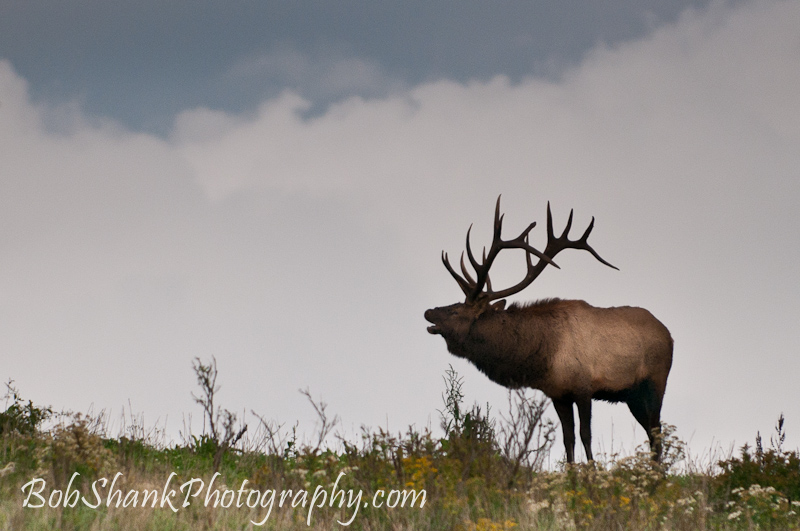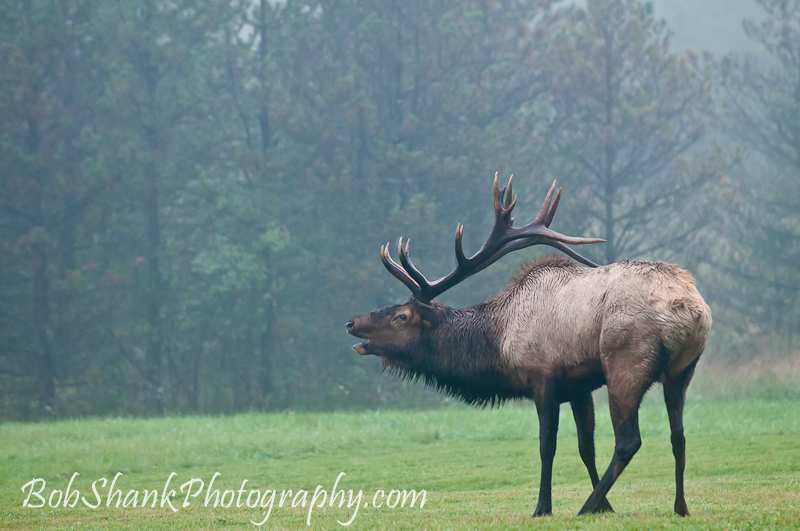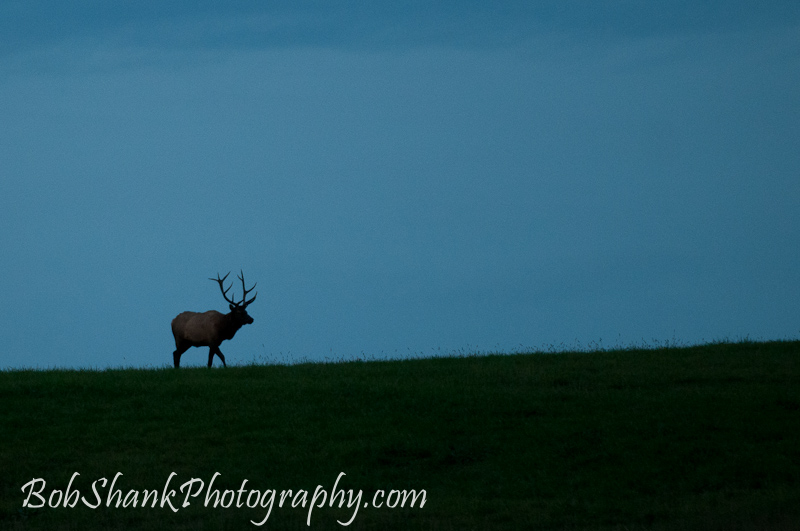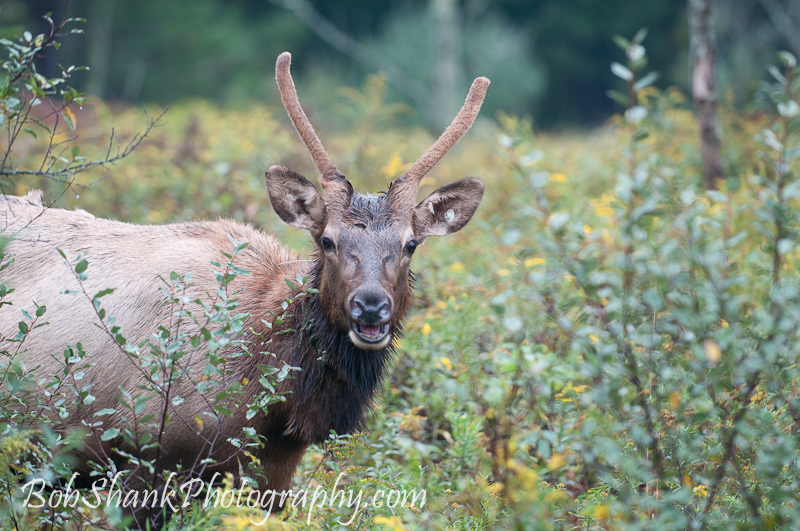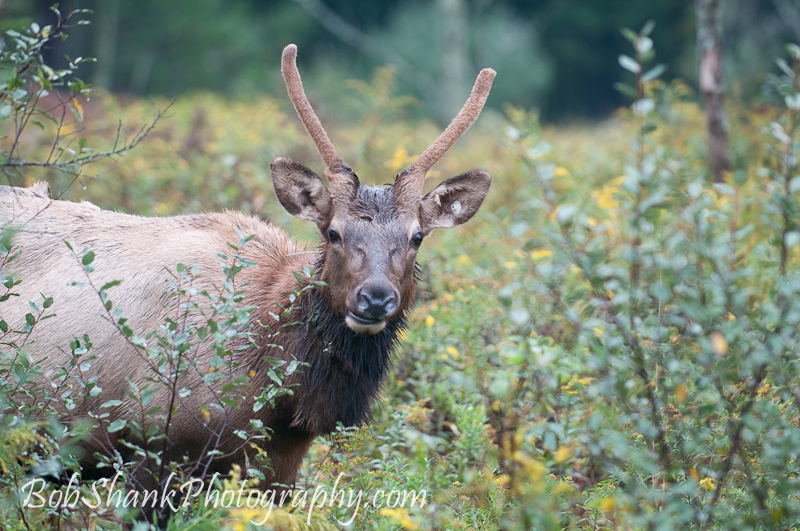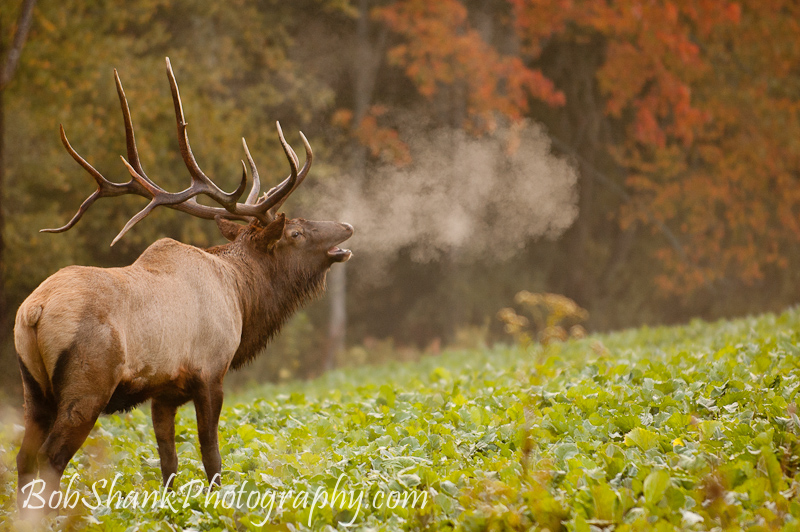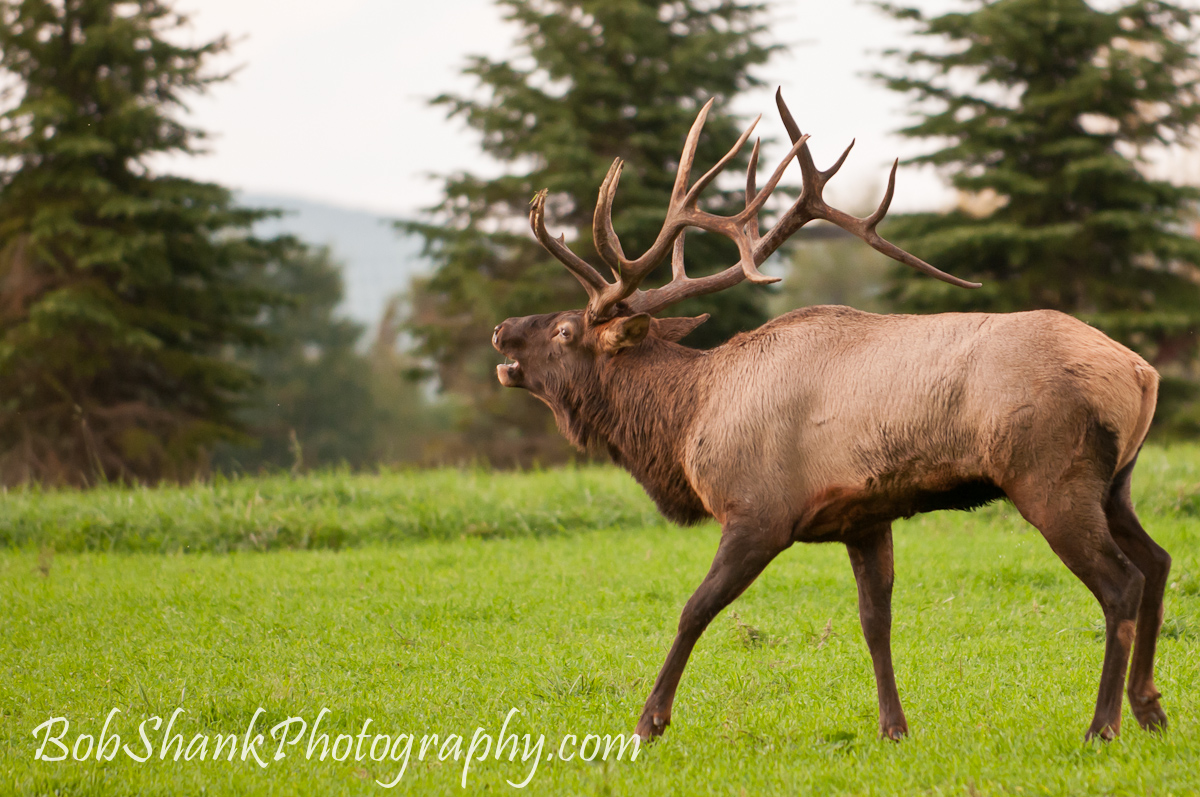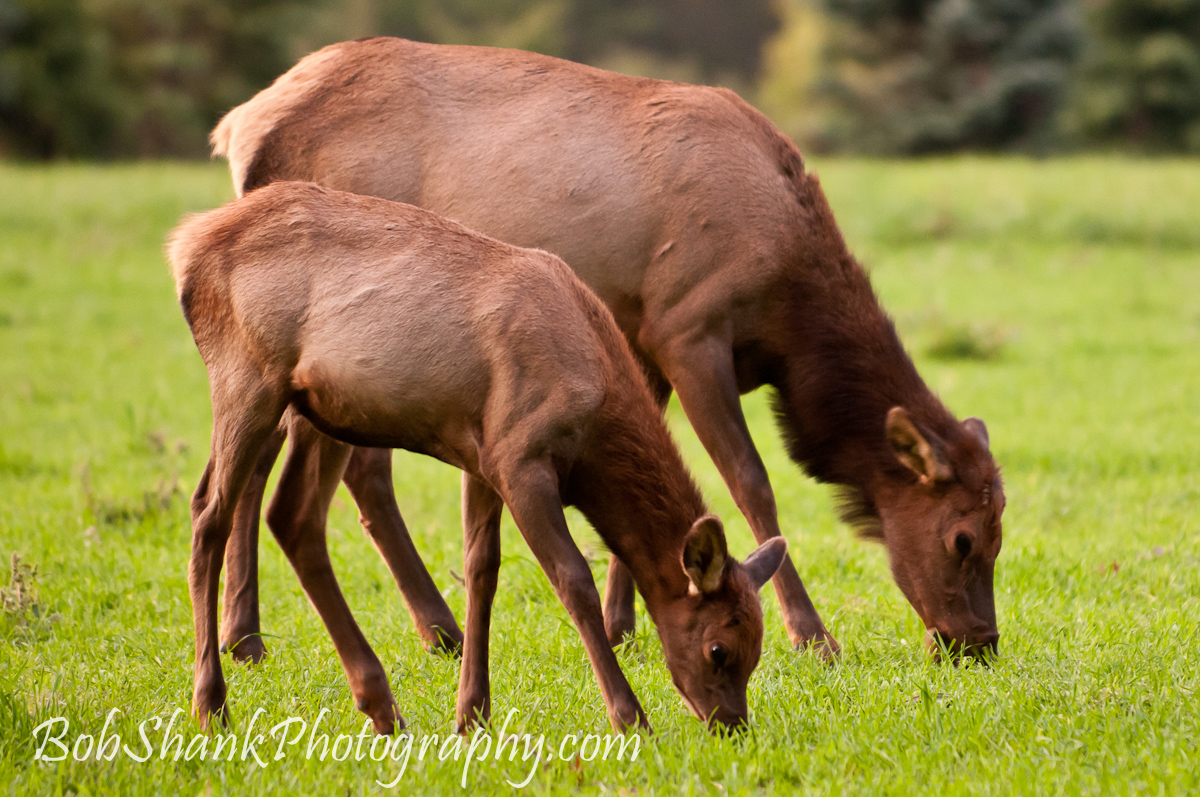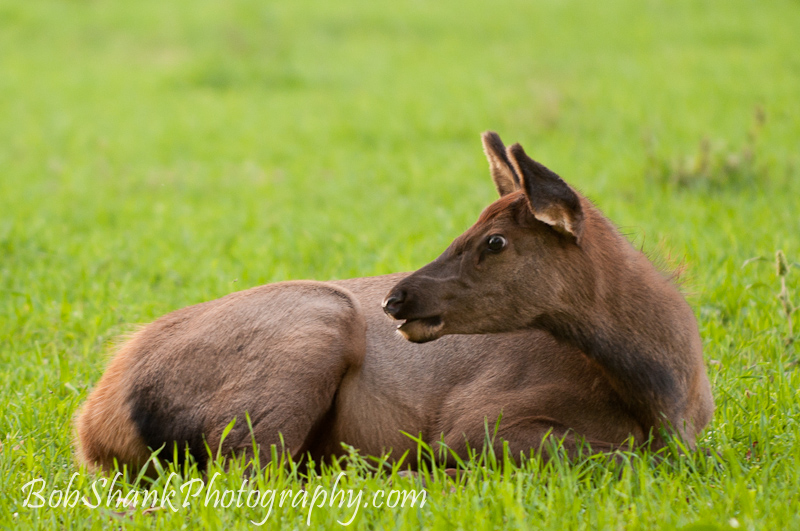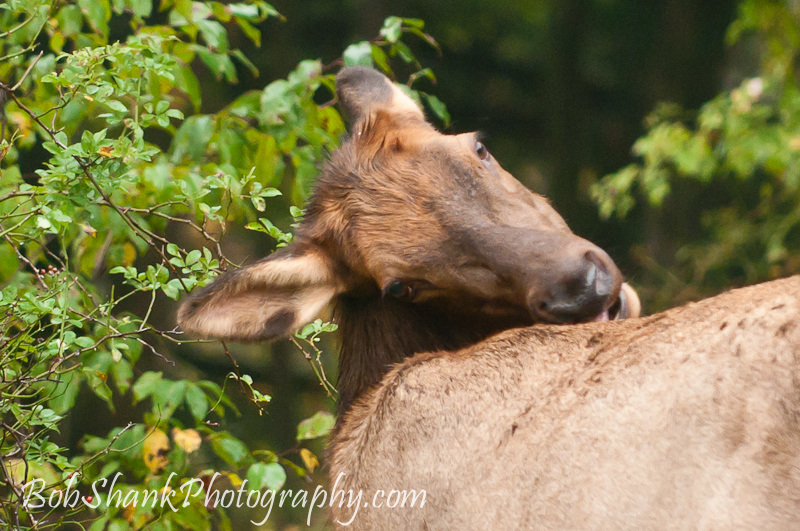
This photo shows the incredible flexibility of a cow elk. Her head is turned all the way around as she is licking her back. I guess to fight off pests and to keep clean, an elk just has to be flexible!
This photograph also provides a study in depth of field, a feature in wildlife photography that can be used to bring attention to the subject at hand. The method requires a large f-stop, which decreases the depth of field and only allows a small distance of the photo to be in focus.
In all honesty, I should have used a slightly smaller f-stop to include a bit more of the subject in focus. Look closely at the contents in this photo and you can see what is in focus and what is not. The forehead of the cow is in focus, but so are the leaves to the left of the elk’s head. Everything else, both the foreground and the background, are out of focus.
The technique is successfully used to highlight an animal and bring it out of its natural habitat in a photograph. Most animals blend right into their environment and this makes it hard to photograph them. Utilizing a shallow depth of field helps to do this.
I’m not sure I like this photo all that much, but it does provide some fodder for some photo instruction and it does show the incredible flexibility of a cow elk.
